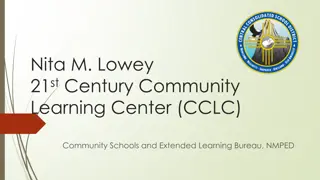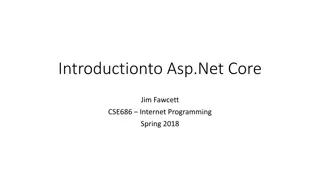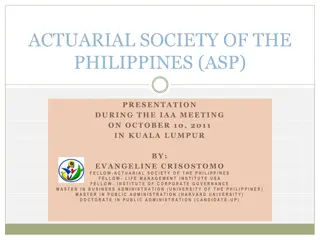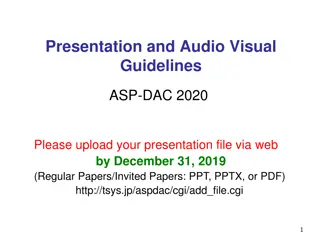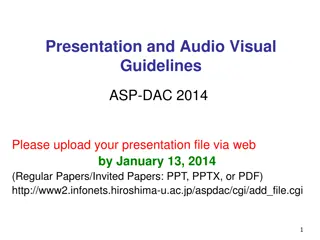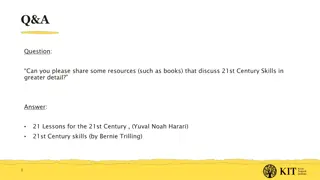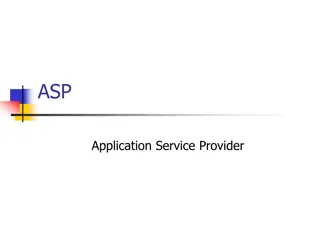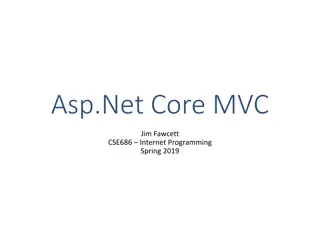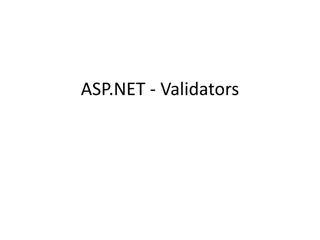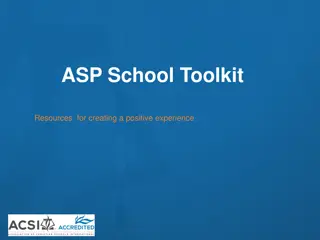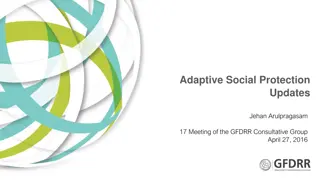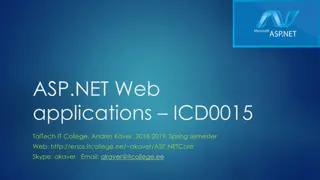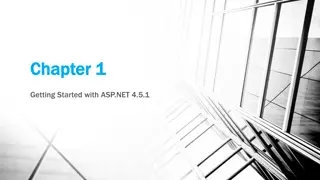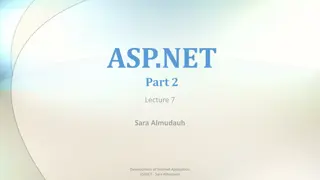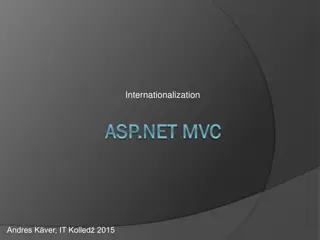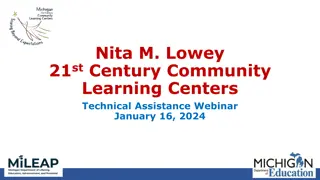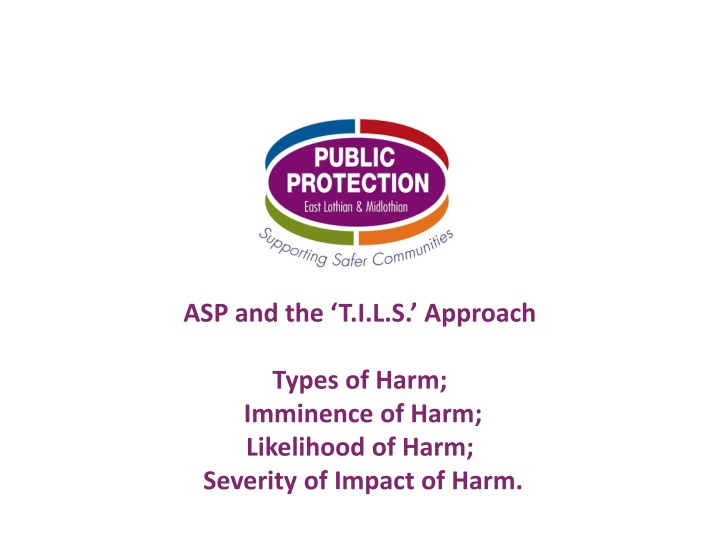
The ASP and T.I.L.S. Approach for Adult Protection
Learn about the ASP and T.I.L.S. Approach in adult protection, focusing on different types of harm, imminence, likelihood, and severity of impact. Explore key strategies and structures for public protection in East Lothian and Midlothian.
Uploaded on | 0 Views
Download Presentation

Please find below an Image/Link to download the presentation.
The content on the website is provided AS IS for your information and personal use only. It may not be sold, licensed, or shared on other websites without obtaining consent from the author. If you encounter any issues during the download, it is possible that the publisher has removed the file from their server.
You are allowed to download the files provided on this website for personal or commercial use, subject to the condition that they are used lawfully. All files are the property of their respective owners.
The content on the website is provided AS IS for your information and personal use only. It may not be sold, licensed, or shared on other websites without obtaining consent from the author.
E N D
Presentation Transcript
ASP and the T.I.L.S. Approach Types of Harm; Imminence of Harm; Likelihood of Harm; Severity of Impact of Harm.
Facilitator Alan Laughland Adult Support and Protection Lead Officer for East Lothian and Midlothian East Lothian & Midlothian Public Protection Office, Room F28, Brunton Hall, Musselburgh, EH21 6AF East Lothian and Midlothian Public Protection (@EMPPC1) / Twitter 07969838549 alaughland@elothianmail.net In adult protection, if in doubt, rule it in, not out!
Welcome Good morning everyone and welcome Please close your e-mails, messaging tools (skype or lync) and switch your phone off MS Teams Etiquette In adult protection, if in doubt, rule it in, not out!
Thanks for being here In adult protection, if in doubt, rule it in, not out!
Public Protection in East Lothian and Midlothian Violence Against Women and Girls Adult Support and Protection Offender Management Child Protection Look beyond the individual: If I work with children and young people, think: are there any adults who might be at risk of harm in this situation? If I work with adults think: are there any children or young people who might be at risk of harm in this situation?
Strategic Structure for Public Protection in East Lothian and Midlothian Critical Services Oversight Group East Lothian and Midlothian Public Protection Committee Learning and Practice Development Sub- group Performance and Quality Improvement Sub- group Offender Violence Against Women and Girls Delivery Group Management Sub- group
Warm-Up In adult protection, if in doubt, rule it in, not out!
Openness To Learning In adult protection, if in doubt, rule it in, not out!
ASP and the T.I.L.S. Approach Types of Harm Imminence of Harm Likelihood of Harm Severity of Impact of Harm TILS- The Grammar of Risk: Analytical recording, risk assessment and risk management. In adult protection, if in doubt, rule it in, not out!
T.I.L.S. Types Imminence Likelihood & Severity Informing SMART actions In adult protection, if in doubt, rule it in, not out!
Putting the Adult at Risk at The Centre of Everything We Do In adult protection, if in doubt, rule it in, not out!
Miss X Formal assessments were rare and of a very poor standard, when recorded. The level of recorded service input fell far short of that required to address the individuals' high degree of need. There was a lack ....of focused monitoring of decisions taken. The lack of comprehensive assessments and of care and protection plans resulted in unfocused contacts with service users, with no clarity of purpose for intervention, and no opportunity for effective monitoring of progress. This is both the reason for, and the outcome of, little or no effective intervention at critical times. https://www.gov.scot/Publications/2004/05/19280/36168#3 In adult protection, if in doubt, rule it in, not out!
Steven Hoskins As with all catastrophic events, the context has to be taken into account in understanding the chronology and the circumstances. The Serious Case Review Panel acknowledged that the origins and even solutions were foreshadowed in the facts of the murder and in the events leading up to this. ...not entirely without merit Margaret Flynn. https://www.cornwall.gov.uk/media/3633936/Steven- Hoskin-Serious-Case-Review-Exec-Summary.pdf In adult protection, if in doubt, rule it in, not out!
Foreshadowed? the origins and even solutions were foreshadowedin the facts of the murder and in the events leading up to this. There was sufficient evidence to justify a likelihood that Steven would come to harm. However, a lack of information sharing and analysis of the evidence prevented an assessment of the types of harm, their imminence, their likelihood and the severity of the impact of that harm. I.e. T.I.L.S. In adult protection, if in doubt, rule it in, not out!
Accuracy... Fact, opinion or professional judgement Fact a thing that is known or proved to be true Opinion A view or judgement formed about something, not necessarily based on fact or knowledge Judgement the ability to make considered decisions or come to sensible conclusions (TILS leading to SMART) In adult protection, if in doubt, rule it in, not out!
Adult Protection & Analysis? Assessments need to be analytical, not descriptive. analysis / nal s s/ noun detailed examination of the elements or structure of something Risk assessment is the analysis of Types of Harm; Imminence of Harm; Likelihood of Harm and the Severity of Impact of Harm. That is, T.I.L.S. are the elements or structure of risk analysis. In adult protection, if in doubt, rule it in, not out!
Analysis Analysis is the collation of evidence based arguments...(and) goes beyond describing ideas...this means pulling the information apart to see what the component parts are and how they relate to each other. This will help practitioners reach an understanding of what is actually happening with a case i.e. causes, key factors and possible outcomes. The practitioner needs to work out the how and why , not merely describe the what (Professional Writing: Guidance Booklet for Social Work Practitioners. Aberdeen City Council and Robert Gordon University, 2010 In adult protection, if in doubt, rule it in, not out!
Risk Matrix and TILS In adult protection, if in doubt, rule it in, not out!
Analysis and Articulation of Risk Articulate your awareness of TILS in all risk recording & verbal discussions- case notes; chronologies; duty to inquires; risk assessments; protection plans; contributions at ASPCC etc: T- Type of harm I- Imminence of Harm L- Likelihood of Harm S- Severity of the Impact of that Harm In adult protection, if in doubt, rule it in, not out!
What is T.I.L.S.? Q: Is T.I.L.S. an assessment tool? A: No. Just as language has grammar to help you to use it, T.I.L.S. is a tool that helps you to: frame your thinking (analysis) of risk & structure your articulation of risk assessment- whether written or verbal In adult protection, if in doubt, rule it in, not out!
What is T.I.L.S.? T.I.L.S. is the structural foundation of your ability to express an analysis of risk. In adult protection, if in doubt, rule it in, not out!
Why Use T.I.L.S.? With exams & interviews we are often advised to restate the question in our answer. Why? In adult protection, if in doubt, rule it in, not out!
How to Use T.I.L.S.? When analysing risk or articulating risk assessment, whether in verbal or written form explicitly state: the T.I.L.S. Factors (Types, Imminence, Likelihood & Severity) How you know the types of harm; imminence of harm; likelihood of harm & severity of impact (Articulation of your ANALYSIS) state what you still need to know & how you plan to find this out In adult protection, if in doubt, rule it in, not out!
How to Use T.I.L.S.? With other professionals encourage them to frame their analysis by explicitly asking about T.I.L.S. E.G. So, we re concerned about the situation with Jean. I need to find out what the types of harm are, how imminent the types of harm are; how likely they are to happen and the severity of the impact on Jean of those types of harm. What s your view of the types of harm she s at risk from and their imminence, likelihood & severity of impact? You may need to bring them back to T.I.L.S. To ensure you have the information. In adult protection, if in doubt, rule it in, not out!
T.I.L.S. Recording Examples G.P. Report You say that the analysis at the case conference will focus on T.I.L.S.: Type of Harm- At risk of recurrent overdose from medication Imminence of that Harm- XXXXX remains at ongoing risk of overdose Likelihood of that Harm- It can be anticipated that there will be other overdoses in the foreseeable future Severity of the impact of that harm- overdosing on certain medications including paracetamol carries the risk of death Advantages?
T.I.L.S. Recording Examples Duty to Inquire The harm being alleged is neglect, emotional and financial harm. This appears to have been occurring over the past year as xxxxxxx s dementia has worsened and he has ceased working. The likelihood of this continuing is high if there is no intervention from social work. The imminence of xxxxxxxx experiencing serious harm is moderate. Advantages? In adult protection, if in doubt, rule it in, not out!
T.I.L.S. in Practice Read John Case Example Examine the Filled Out TILS Risk Clarification Tool Your Reflections? In adult protection, if in doubt, rule it in, not out!
T.I.L.S. and S.M.A.R.T. Actions Types Imminence Likelihood Severity of Impact TILS informs SMART actions E.g. Types will inform the choice of action Imminence will inform timing and frequency of review Likelihood will inform how necessary an action is Severity will inform how restrictive the action needs to be In adult protection, if in doubt, rule it in, not out!
Record for the Next Person to Read Your Work Can the next person see your T.I.L.S. based analysis & S.M.A.R.T. Actions? In adult protection, if in doubt, rule it in, not out!
T.I.L.S. and Case Conferences Council Officers: Make contributions focussed on an analysis of TILS Say what they still need to know to complete their TILS analysis & back this up with questions to elicit the information Articulate the link between their TILS analysis & their recommendations for SMART action points In adult protection, if in doubt, rule it in, not out!
T.I.L.S. and Case Conferences Chairs who: Encourage & focus TILS based analysis from all Through the above ensure that the SMART Safety Plan addresses the TILS risk analysis In adult protection, if in doubt, rule it in, not out!
T.I.L.S; Descriptive Writing and Critical/analytical Writing In adult protection, if in doubt, rule it in, not out!
T.I.L.S; Descriptive Writing and Analytical Writing Restate the question? Question: Jean is being visited by R.S.O.s. What Types of Harm; Imminence of Harm; Likelihood of Harm and Severity of Impact of Harm is Jean at risk of? Answer: T.I.L.S. based analysis Types of harm? Jean has a mild learning disability which leaves her unable to protect herself from financial and sexual harm. Likelihood of harm is high as the adult lives alone and does not have any friends. The harmers are R.S.O.s with a track record of such behaviour. Imminence is high as the harmers visit daily and there is evidence of harm each visit. Severity of impact of harm is currently high as the adult has attempted suicide in the past when stressed. In adult protection, if in doubt, rule it in, not out!
T.I.L.S. Impact? Before T.I.L.S. I knew what the risks were at the end of the APCC. Since T.I.L.S. I know what they are before the APCC. Council Officer. I really like T.I.L.S. Council Officer Trainee TILS allow you to write less and say more. AND TILS allow you to talk less and say more. In adult protection, if in doubt, rule it in, not out!
T.I.L.S. Impact? Transfer of learning into practice is necessary for maximum impact Reflection: Do current templates sufficiently support the use of T.I.L.S.? Would you like them to? In adult protection, if in doubt, rule it in, not out!
Transfer of learning into practice Use T.I.L.S. in your analysis, recording and articulation of risk Complete a case study based TILS analysis Bring a completed T.I.L.S. Risk Analysis tool to 03/08/22 CO Meeting (TILS Transfer of Learning to Practice) Any support required: Ask me In adult protection, if in doubt, rule it in, not out!


